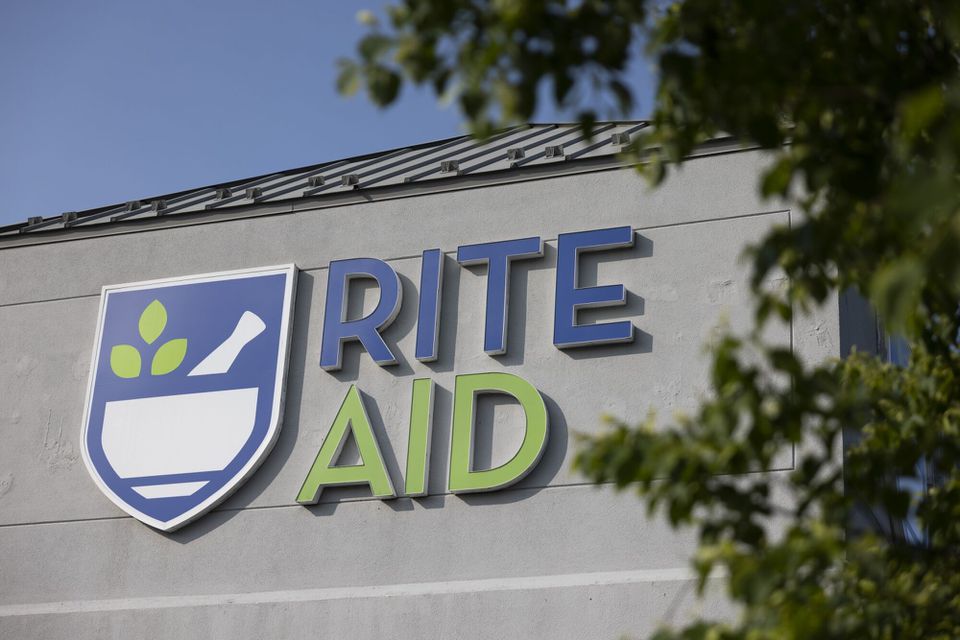U.S. pharmacy chain Rite Aid filed for bankruptcy on Oct. 15, the company said, after suffering declining sales and legal threats over its alleged involvement in the opioid crisis.
Rite Aid has one of the largest pharmacy networks in the United States, with 2,100 outlets selling medicines and health products as well as food and hygiene items.
The Philadelphia-based group said it had already reached agreements with several major creditors to restructure its debt, according to a press release.
It also said it had received commitments for $3.45 billion in new financing, which should enable it to continue operating.
Investors have expected the bankruptcy filing for several weeks after the share price fell to 38 cents, down from more than $20 just two and a half years ago.
Rite Aid is paying the price for a string of failed mergers and acquisitions, as well as the consequences of the opiate crisis.
In 2006, it bought the Eckerd and Brooks chains for $3.4 billion in a deal that expanded its network to over 5,000 branches, but also weakened its financial situation.
The group then sought to sell itself to rival Walgreens in 2015, but the deal fell through, with Walgreens only taking over 2,200 stores two years later.
In 2018, a planned merger with supermarket group Albertsons also fell through.
In its last financial year, sales contracted by 1.9 percent to $24 billion, and the group posted a loss of $749 million.
In March, the U.S. Department of Justice filed a lawsuit against Rite Aid in a Cleveland federal court, accusing the company of filling prescriptions for opiates oxycodone and fentanyl, two powerful painkillers responsible for thousands of overdose deaths in the U.S. every year.
The opioid crisis, which has caused more than 500,000 deaths over 20 years in the United States, has triggered a flurry of lawsuits against drugmakers, distributors and pharmacies from victims as well as cities, counties and states.
U.S. pharmacy chain Rite Aid filed for bankruptcy on Oct. 15, the company said, after suffering declining sales and legal threats over its alleged involvement in the opioid crisis.
Rite Aid has one of the largest pharmacy networks in the United States, with 2,100 outlets selling medicines and health products as well as food and hygiene items.
The Philadelphia-based group said it had already reached agreements with several major creditors to restructure its debt, according to a press release.
It also said it had received commitments for $3.45 billion in new financing, which should enable it to continue operating.
Investors have expected the bankruptcy filing for several weeks after the share price fell to 38 cents, down from more than $20 just two and a half years ago.
Rite Aid is paying the price for a string of failed mergers and acquisitions, as well as the consequences of the opiate crisis.
In 2006, it bought the Eckerd and Brooks chains for $3.4 billion in a deal that expanded its network to over 5,000 branches, but also weakened its financial situation.
The group then sought to sell itself to rival Walgreens in 2015, but the deal fell through, with Walgreens only taking over 2,200 stores two years later.
In 2018, a planned merger with supermarket group Albertsons also fell through.
In its last financial year, sales contracted by 1.9 percent to $24 billion, and the group posted a loss of $749 million.
In March, the U.S. Department of Justice filed a lawsuit against Rite Aid in a Cleveland federal court, accusing the company of filling prescriptions for opiates oxycodone and fentanyl, two powerful painkillers responsible for thousands of overdose deaths in the U.S. every year.
The opioid crisis, which has caused more than 500,000 deaths over 20 years in the United States, has triggered a flurry of lawsuits against drugmakers, distributors and pharmacies from victims as well as cities, counties and states.


